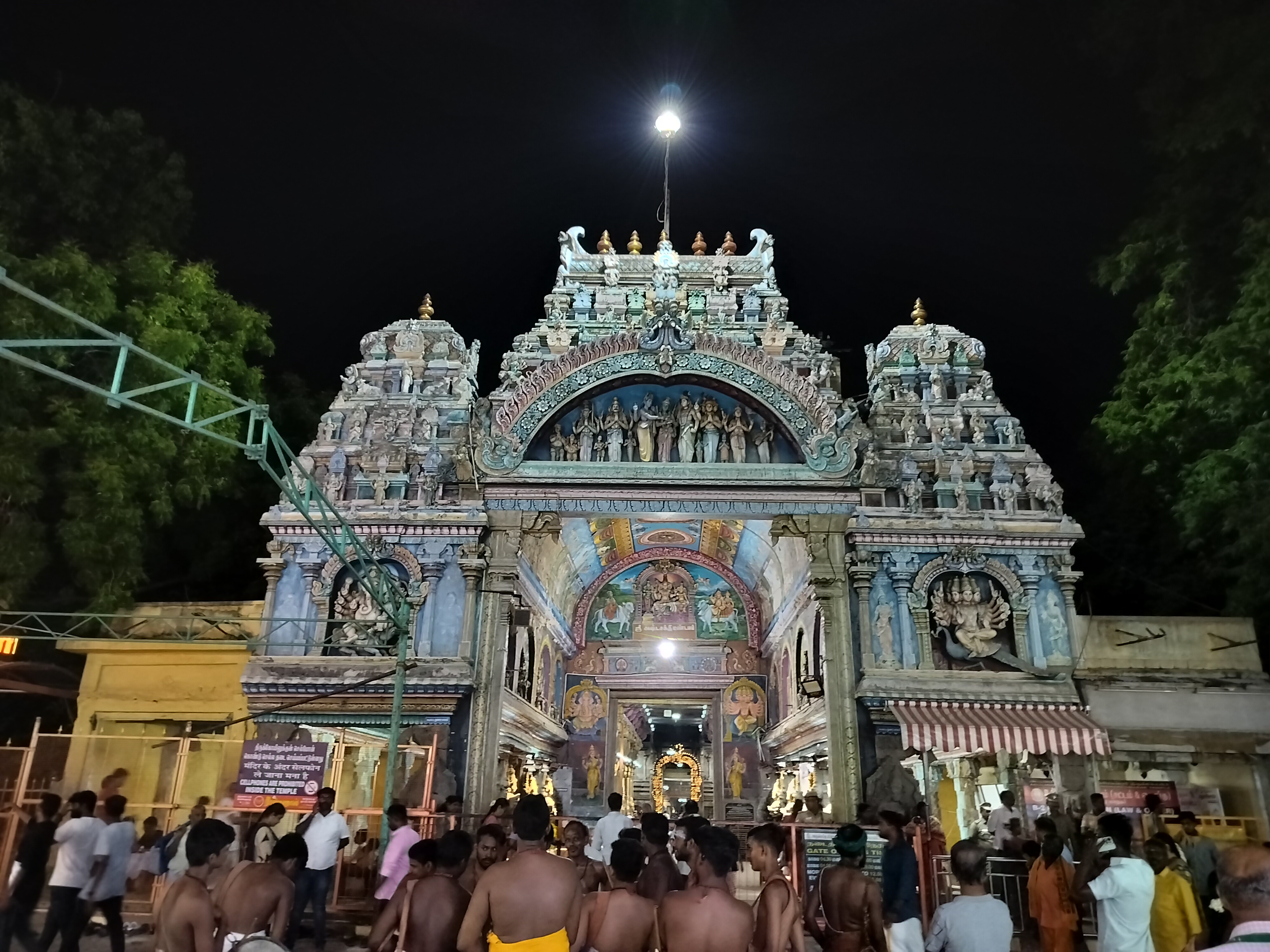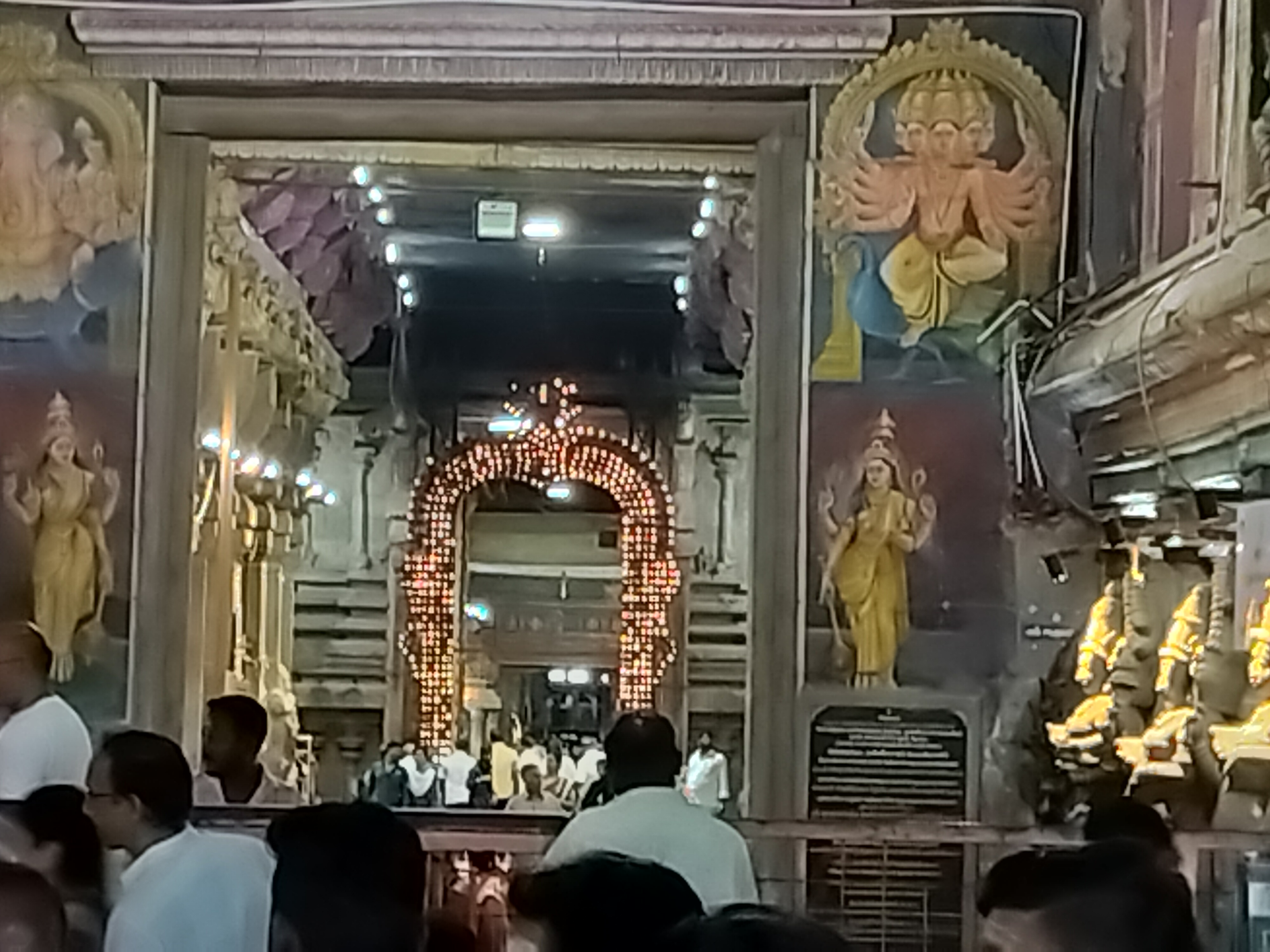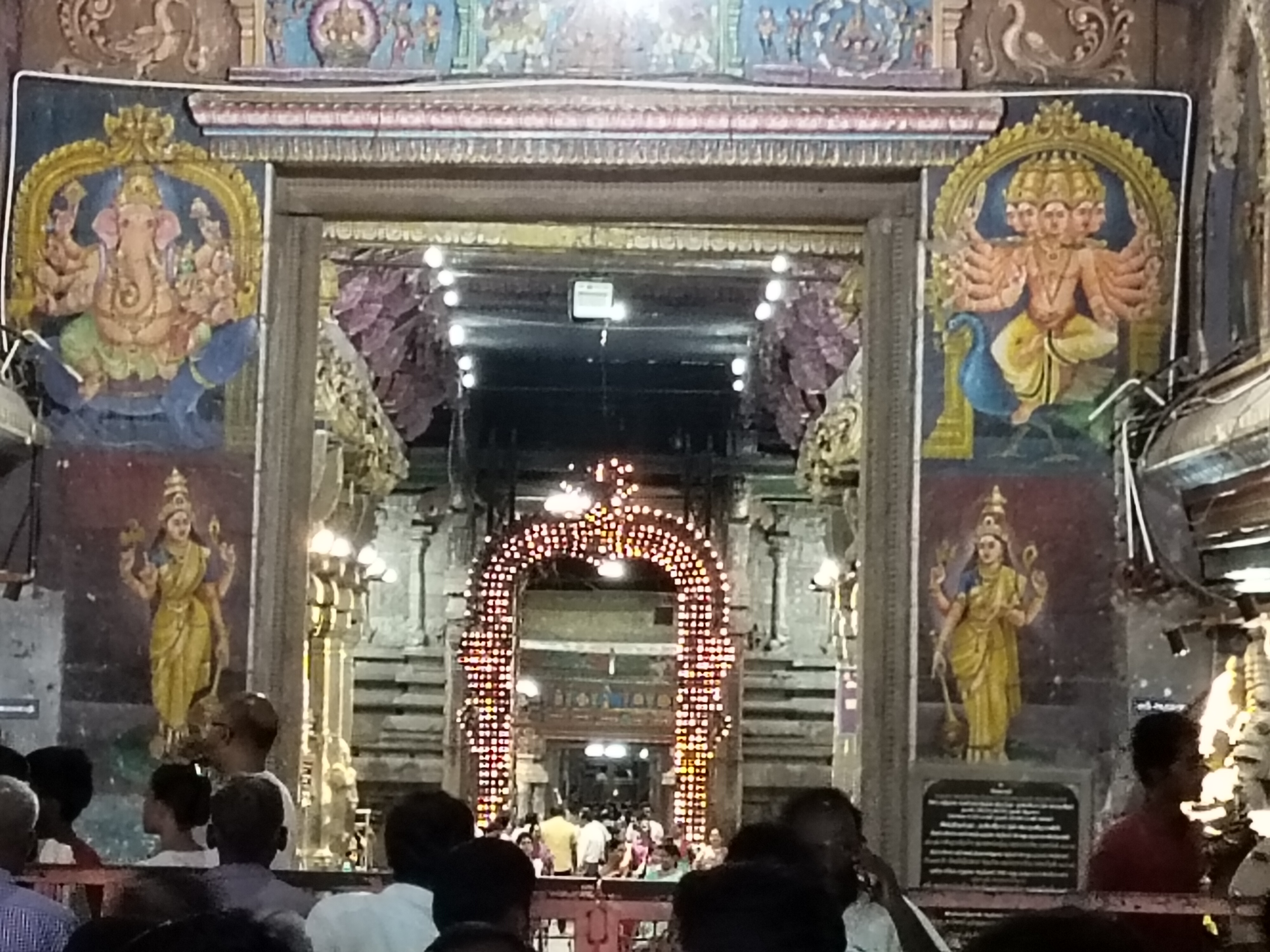


Meenakshi Temple
The colourful abode of the triple-breasted warrior
goddess Meenakshi which means - fish eyed, is considered to be the peak of
South Indian temple architecture, as vital to this region’s aesthetic heritage
as the Tajmahal to the North India. It’s not so much a 17th century
temple as a 6-hectare complex with 12 tall gopurams, encrusted with a staggering
array of gods, goddesses, demons and heroes (1511 on the 55m high south gopuram
alone). According to the legend, the beautiful Meenakshi (a version of Parvati)
was born with three breasts and the prophecy that her superfluous breast would
disappear when she would meet her husband. This happened when she met Shiva and
took her place as consort.
Meenakshi Sundaraswarar Temple is a historic temple located on the southern bank of
the Vaigai River in the temple city of Madurai. The temple is at the centre of
the ancient temple city of Madurai mentioned in the Tamil Sangam literature,
with the goddess temple mentioned in 6th-century CE texts. This temple is
one of the 275 temples of Shiva that are revered in the verses of Tamil
Saiva Nayanars of the 6th-9th century CE.
The west
tower or the gopuram of the temple is the model based on which the Tamil Nadu
State Emblem is designed.
Madurai
Meenakshi Sundareswarar temple was built by Pandayan Emperor Sadayavarman
Kulasekaran I (1190 CE–1205 CE). He built the main portions of the
three-storeyed Gopuram at the entrance of Sundareswarar Shrine and
the central portion of the Goddess Meenakshi Shrine. The traditional texts call
him a poet-saint king; additionally credit him with a poem called Ambikai
Malai,
The temple
is a masterpiece of Dravidian architecture. The richly sculptured and decorated
‘Gopurams’ of the temple are its major highlight that can be seen from even a
far-off distance. Adorned with thousands of figures of gods, goddesses and
demons, the Meenakshi Amman Temple is no less than an architectural marvel.
Intricately
carved figures and scenes depicted from Indian mythology in the halls add to
the artistic charm of the temple. Scenes of ocean of milk being churned by
devas and asuras, nine heads Ravana playing veena, Rishi Markandeya hugging
Shiva Lingam and wedding ceremony of Sundareswarar & Meenakshi are few of
the sculptures worth noticing when you are inside the temple premises.
Though
the temple has historic roots, most of the present campus structure was rebuilt
after the 14th century CE, further repaired, renovated and expanded in the 17th
century by Tirumala Nayaka. In the early 14th century, the armies
of Delhi Sultanate plundered the temple, looted it of its valuables
and destroyed the Madurai temple town along with many other temple towns of
South India. The contemporary temple is the result of rebuilding efforts
started by the Vijayanagar Empire rulers who rebuilt the core and
reopened the temple. In the 16th century, the temple complex was further
expanded and fortified by the Nayak ruler Vishwantha Nayakar and
others. The restored complex now houses 14 gopurams, ranging from
45–50 m in height, with the southern gopuram tallest at 51.9 metres.
After
entering the temple, look around the Pudhu Mandapa. This 16th
Century pillared hall stands outside the Meenakshi Amman Temple, opposite the
eastern gopuram. It is crammed with colorful textile and crafts stalls. The
main temple entrance is through the eastern gopuram which is the oldest. First,
on the right, you will come to the Thousand Pillared Hall, now housing the
fascinating Temple Art Museum. Moving on to the temple, you will reach a Nandi
shrine surrounded by more beautifully carved columns. Ahead of the main Shiva
shrine, flanked on each other side by massive dvarapals, and further ahead of
the left, in a separate enclosure, is the main Meenakshi shrine. Move around
the Golden Lotus Tank, where small pavilion going out at the western end has
ceiling murals depicting
The temple
complex is spread over about 14 acres. The complex has numerous shrines
and mandapas, of which the most important and largest are the two parallel
shrines in the innermost courtyard, one for Meenakshi Amma and the other for
Sundareshvara. Additionally, the complex has a golden lotus sacred pool for
pilgrims to take bath; a thousand-pillar hall with extensive sculpture, the
kalyana
The goddess
shrine has the green stone image of Meenakshi, standing in bent-leg posture.
Her raised hand holds a lotus, on which sits a green parrot. A distinct feature
of Meenakshi in terms of iconography is the presence of parrot in her right
hand.
The
shrine for Sundareswarar is the largest within the complex and its
entrance is aligned with the eastern gopuram. The shrine for Meenakshi is
smaller, though theologically more important. Both the Meenakshi and
Sundareswarar shrines have gold plated Vimanam,tower over sanctum. The golden top can be seen
from a great distance in the west through the apertures of two successive
towers.









